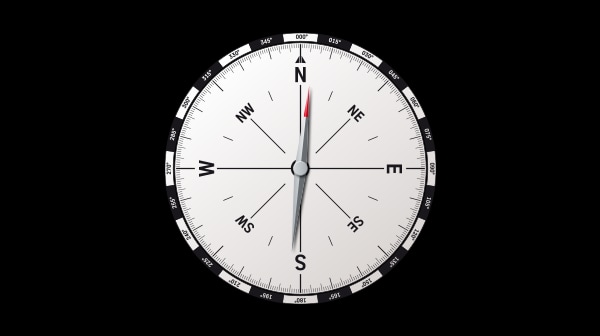Impairments and disposals has been saved

Perspectives
Impairments and disposals
On the Radar: Accounting and reporting for long-lived assets and discontinued operations
Under ASC 360-10, the accounting and reporting for long-lived assets differ depending on what the entity intends to do with them. This edition of On the Radar maps out the decision process and highlights key considerations for impairments and disposals of long-lived assets and discontinued operations.

On the Radar series
High-level summaries of emerging issues and trends related to the accounting and financial reporting topics addressed in our Roadmap series, bringing the latest developments into focus.
Clarifying intent
The convergence of various macroeconomic and geopolitical factors has created a volatile and uncertain environment in which a business’s ability to forecast results and make decisions can be difficult. Factors that have contributed to such challenges include interest rate changes, inflation, and a tight labor market, which together have contributed to bank failures or downgrades, businesses’ struggles to raise capital, companies’ announcements of layoffs, broader restructuring plans, and changes in customer behavior. Further, the ways in which people are living and working in the post-pandemic environment have significantly affected real estate demands and preferences.
How these factors affect cash flow and fair value estimates used in impairment analyses should be considered. As businesses evolve in response to these conditions, preparers may also need to make determinations pertaining to (1) assets held for sale and (2) reporting discontinued operations. Even as entities evolve in times of relative stability, they must consider the reporting for impairments and disposals.
Long-lived assets within the scope of ASC 360-10 are accounted for and tested for impairment differently depending on the entity’s intent regarding the assets. Long-lived assets that the entity intends to hold and use in its operations, including long-lived assets that the entity intends to abandon, distribute to owners, or exchange in a nonmonetary transaction accounted for at carrying amount, are tested for impairment when a triggering event occurs by performing a two-step recoverability test. In the two-step recoverability test, the carrying amount of an asset group is first compared with its undiscounted cash flows to determine whether an asset is recoverable. If the held-and-used asset group is determined not to be recoverable, the asset group is written down to fair value. By contrast, long-lived assets that the entity intends to sell are tested for impairment upon classification as held for sale and in each subsequent reporting period by comparing their carrying amount with their fair value less costs to sell.
The flowchart below summarizes how long-lived assets are accounted for and presented on the basis of the entity’s intent regarding the assets.
Long-lived assets classifications
Long-lived assets that are classified as held and used are tested for recoverability upon the occurrence of a triggering event, which is an event or change in circumstance that indicates that their carrying amount may not be recoverable. When performing a recoverability test, an entity groups long-lived assets with other assets and, possibly, liabilities at the lowest level for which the entity can identify cash flows that are largely independent of the cash flows of other assets and liabilities. Such a grouping is called an asset group.
An asset group is not recoverable if its carrying amount is in excess of the sum of the undiscounted cash flows expected to result from the use and eventual disposition of the asset group. When an asset group is not recoverable, the next step is to measure an impairment loss as the amount by which the carrying amount of the asset group exceeds its fair value.
An entity may decide to sell one or more of its long-lived assets. Long-lived assets are grouped with the other assets and liabilities the entity intends to sell. Such a grouping is called a disposal group. Once all of the held-for-sale classification criteria are met, an entity classifies the disposal group as held for sale, stops depreciating or amortizing the long-lived assets, and measures the disposal group at the lower of its carrying amount or fair value less cost to sell. The entity recognizes a loss, if any, to adjust the carrying amount of the disposal group to its fair value less cost to sell in the period in which the held-for-sale criteria are met and in each subsequent period until the disposal group is sold. Therefore, the carrying amount of the disposal group is adjusted for subsequent increases or decreases in its fair value less cost to sell, except that any subsequent increase cannot exceed the cumulative loss previously recognized. Any gain or loss from the sale of the disposal group not previously recognized is recognized on the date of sale.
An entity may also dispose of one or more long-lived assets before the end of their previously estimated useful life by, for example, abandoning them, exchanging them in a transaction accounted for at carrying amount, or distributing them to owners in a spin-off. Assets to be disposed of other than by sale should continue to be classified as held and used until they are disposed of.
Once long-lived assets have been classified as held for sale or have been disposed of an entity must determine how to present the disposition in its financial statements. The entity must first assess whether the disposition meets the criteria for discontinued-operations reporting. The purpose of reporting discontinued operations separately from continuing operations is to provide stakeholders with information about assessing the effects of a disposal on an entity’s ongoing operations. The operations of a disposal group may be presented as a discontinued operation only if (1) the disposed-of assets (and liabilities) represent a component of an entity, (2) the assets (and liabilities) meet the held-for-sale classification criteria or have been disposed of, and (3) the disposal represents a strategic shift that has or will have a major effect on an entity’s operations and financial results. Therefore, not all disposals qualify for discontinued-operations reporting.
The disclosure requirements differ depending on whether a disposal (1) meets the criteria for discontinued-operations reporting, (2) does not meet the criteria for discontinued-operations reporting but is (or includes) an individually significant component of the entity, or (3) does not meet the criteria for discontinued-operations reporting and is not (or does not include) an individually significant component of the entity. Entities will need to use judgment in interpreting the meaning of the term “individually significant,” since this term is not defined.

Considerations for SEC registrants
For disposals reported as discontinued operations, SEC registrants must consider the impact of the retrospective change on the historical financial statements included in their Exchange Act reports (e.g., Forms 10-K and 10-Q) and in registration statements under the Securities Act (e.g., registration statements on Form S-3) and other nonpublic offerings. Registrants may also be required to report a disposition, including certain disposals that do not qualify as discontinued operations, on a Form 8-K and provide pro forma financial information that gives effect to the disposition. Further, registrants must consider the impact the revised financial statements may have on other SEC requirements (e.g., SEC Regulation S-X, Rules 3-05, 3-09, 4-08(g), and 3-10).
Continue your learning on impairments and disposals of long-lived assets and discontinued operations
Deloitte’s Roadmap Impairments and Disposals of Long-Lived Assets and Discontinued Operations provides Deloitte’s insights into the guidance in ASC 360-10 and ASC 205-20 on impairments and disposals of long-lived assets and presentation of discontinued operations.

Subscribe to the Deloitte Roadmap Series
The Roadmap series provides comprehensive, easy-to-understand guides on applying FASB and SEC accounting and financial reporting requirements.
Explore the Roadmap library in the Deloitte Accounting Research Tool (DART), and subscribe to receive new publications via email.
Let's talk!
Recommendations
Fair value measurements and disclosures
On the Radar: Financial reporting impacts of ASC 820
Accounting & financial reporting roadmap
Find comprehensive guides to help you face your most pressing accounting and reporting challenges with clarity and confidence.







